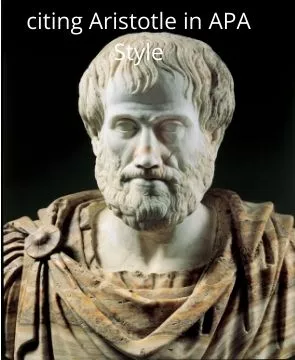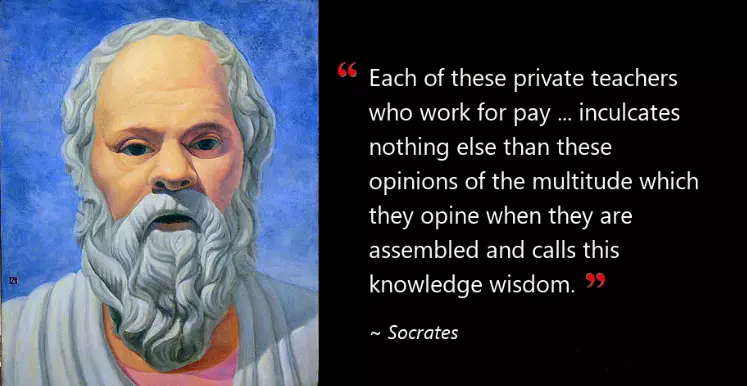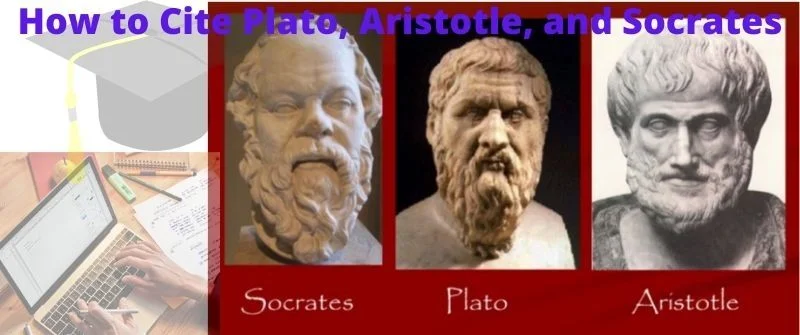Citation is a method of informing a reader that some of the materials you used in the context did not originate from you. The reason why we cite sources is to give credit to the authors. Also, citation helps the reader to go for more details in the cited sources.
Furthermore, writers site sources to strengthen the work by offering external support for their ideas. Citing does not reduce your effort to look less original. It only pouts some emphasis on the originality of the work.
What to Cite from the Philosophers
There are several things that one can cite. They include
- Ideas, thoughts
- Direct quotes
- When making a reference to a specific thought
- In case you are paraphrasing
- When other people’s ideas and thoughts brought influence to your writing.
How to Cite the Following in Both MLA and APA

You must know how to cite materials from ancient sources to enable your research to be authentic.
MLA and APA are the most common formats that students use.
Citing Plato in APA
APA style is a popular method that many authors use in social sciences. When you cite his texts like “the Symposium” in the bibliography, you begin by listing the author’s name, followed by the year of translation. Next is the location and the publisher.
One does not need to cite the original date when they were published since it is unknown. For example:
Plato. (1998) The symposium, Florida, IN: Jewel Publishing Company
If you are using an in-text citation, you should use the author’s name and the translation date. The title must be in italics. For example,
Daedalus informed him that Aristides updated home concerning the event (Plato, transl.1998)
How to Cite Plato AMA Style
We use AMA style when you are writing humanities and liberal arts papers. For instance, if you are citing the “The symposium” as indicated above, you should follow the below procedure:
- The author
- Title
- Translator
- City
- Publisher
- Year of publication
- Medium
In the following example, the title will be in italics.
Plato. The symposium. Trans. Archimedes Icarus and Alexandra Nehemas. Florida: Jewel Publishing Company, 1998. Print
You are free to use extra details when citing the excerpts from “The symposium” since varying classes are still in circulation. When using this MLA style, you should include the page numbers no matter how the translation’s inconsistencies can cause. One is free to use the lines of the speech and the page numbers.
For example
Daedalus informed him that Aristides updated home concerning the event (2; 173B)
Citing Aristotle in APA Style
Aristotle was a great Greek philosopher who excelled in creative writing in the 4th century BCE. He wrote classical works referred to as Poetics.

When citing, they will require a piece of different information when doing in-text references that you would do to a book.
They will not be on the reference at the end of the book.
Citation Format
Aristotle’s works like “Poetics” do not need referencing page entry.
You will be using the in-text citation to offer more details about the source.
The initial reference should provide the title for the “Poetics” to allow the reader to know what you are referring to. For example, “As stated in Aristotle’s Poetics…”
The parenthetical citation should have the name of the author name. When referring to “Poetics,” you should quote the date of translation since the publication date is unknown.
For example: (Aristotle, trans. 1980). Such details allow the readers to locate the version where you quoted the paper. When citing a piece of paper, give details to enable the reader to find the passage.
A section number could be okay since the “Poetics” appears in sections. For example, (Aristotle, trans. 1970, II). Such indicates that it was a translation of 1975 of Aristotle’s work in section two.
How to Cite Aristotle in MLA
When you are citing Aristotle in MLA, you should include the following format. Begin with:
- Listing the author
- The translator,
- The title
- The publisher
- The year of publication
- The medium
For example, if you are citing “The Nicomachean Ethics,” you can use the following format:
Aristotle, P D. Bush, and Lesley Patel. The Nicomachean Ethics. Wise: Oxford University Press, 2012. Print.
Citing Socrates in MLA
It follows the Stephanus numbering, which you can find on the margins of different books. When citing a passage, you should i9ndicate the name of the dialogue. Plus, you must show the Stephanus page and the section as it appears. For example,
Apology 35d
In normal writing, passages can consume more than one page. As such, the author should indicate the range. For instance, you can cite a passage that you extracted from Socrates at the beginning of 228b and continuing to 228c as follows: Socrates 228b-c
When using an in-text citation in MLA, you are free to exclude the author’s name. Also, you can remove the name of the dialogue suppose they appear in the sentence itself.
The benefit of this style is that people who have varying editions can use the same page numbers. The format is simple, use,
- The title,
- A section number
- A letter
For example
Socrates believe those who like writing as naïve (Phaedrus 267c)
In this example, the number stands for the page number. We were citing from page 267 and section c of the Stephanus edition.
Citing Socrates in APA

When you are citing Socrates in the APA format, you will use the following steps:
- The author’s name
- Original year of publication
- The title of the book
- Translated by
- The name of the publisher
- The year of publishing
You can look at the following example
Peter, Lenny G., 1949-. Plato’s “Apology of Socrates”: an Interpretation, with a New Translation. Ithaca, FL. Florida University Press, 1976.
How to cite ancient sources and classics
When citing the old classical works, you should do the following:
- Author
- The year of original publication (Place it in round brackets)
- The book title (Let it be in italics)
- Translated by (suppose it is relevant)
- Edition (One should include the edition number only if it is not the first edition)
- The publisher and the place of publication
- Volume and series number if need be.
When you are citing ancient sources like poetry, let it be less than two lines. In addition, you should mark the division between verses. For example, “Son of Aristotle, life is not fair to you/ my son, you are the most desperate man on earth.” The use of “/” will indicate a new line.
Aspects of Citing
When you begin to cite, ensure that you remain consistent. It could be safe to over-cite that putting your paper at risk of plagiarism. If you doubt certain information, it is better to cite or ask the professor about the matter.
Ensure that you cite well as you use text or words that are not your own. Such could be a paraphrase or a direct quote. If it is a non-controversial fact or common knowledge, you do not have to cite it.
Also, when citing ancient sources, you can observe the following:
1. Abbreviations
Most classical authors lack standard abbreviations that you can use. For example, it could be Oxford Classical Dictionary (DE5. 08.2007).
2. Capitalization
If you are citing a book generically, you should capitalize all elements, for example, in Book Sixteen.
3. Omitting the Name of the Work
Suppose the author wrote a single work only; you can omit the name of the work. For example, you can write Herodotus 8:1 instead of Herodotus, Histories 8.1.

Joseph is a freelance journalist and a part-time writer with a particular interest in the gig economy. He writes about schooling, college life, and changing trends in education. When not writing, Joseph is hiking or playing chess.
